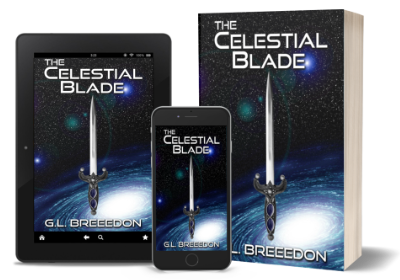The Wizard of Time Trilogy: Windsor Castle
With the completion of the Wizard of Time Trilogy, I thought it would be fun to create a page about Windsor Castle, the home of the Council of Magic and Gabriel’s new home as the series begins. The Windsor Castle of the novels is slightly different than the real place. Here’s how it’s described in The Wizard of Time (Book 1).
Gabriel walked through the Upper Ward of Windsor Castle with Ohin. The Upper Ward was an inner courtyard of sorts. The castle was something else. Ohin had explained that it wasn’t the real Windsor Castle. Well, it was a Windsor Castle, but not the one from the Primary Continuum. It had been snatched from an unstable branch of time in 1971 CE, just before the branch was severed from the Primary Continuum. It was fortunate timing, because a fire in 1992 had damaged more than a hundred rooms of the castle. Ohin said that it had required nearly fifty Time Mages working together to move the castle back into the far past of the Primary Continuum. Apparently you could move between alternate branches of reality and the Primary Continuum, but Ohin had not yet explained how. There was so much he hadn’t explained. This Windsor Castle was now the seat of the Grand Council of Magic. The stones of the castle had been altered with magic to degrade into ash if the Mages required it. A precaution, Ohin had said, in case something went terribly wrong. This way no archeologist in the future would ever dig up the remains of a one hundred twenty-five million-year-old castle. That was the sort of thing that created bifurcations, branches in time. It was the same reason the castle was placed so far in the past. Even if the presence of the castle somehow disturbed the dinosaurs outside its walls, it would be unlikely to create a bifurcation of the Primary Continuum since all the dinosaurs would go extinct around sixty-five million years BCE. Ohin had said that the castle had limited electricity, powered by a series of small windmills outside the castle walls. Lighting also came from oil lamps, candles, and magic.
And a few pages later:
“And why Windsor Castle?” Gabriel asked, looking around the magnificent structure and its grounds one more time. It had been quite a shock to step from his room in the infirmary and into the courtyard to see the castle. He had recognized it immediately. He and his parents had taken a trip to London when he was eleven and he had spent hours dragging them around the castle and pouring over the guidebook for interesting bits of history. He loved the ghost stories in particular. King Henry VIII haunting the cloisters, the specter of Queen Elizabeth I in the Royal Library, the spirit of Herne the hunter and gamekeeper stalking the grounds with his wraithlike pack of dogs. He wondered if any of the ghosts had been brought back in time with the castle.
And a slight longer description from an earlier draft of the first novel:
Gabriel spent the rest of the afternoon getting a tour of the castle from Ling and Teresa. Construction on the castle had begun in the year 1350 CE. There had been a smaller castle there originally, but King Edward III, sometimes called ‘The King of Windsor,’ had order it demolished to build the new, much larger castle. All that remained of the older structure was the Curfew Tower, a lesser tower at the western edge of the castle walls. After its initial construction came hundreds of years alternating between neglect and reconstruction, additions, and refurbishments. The castle saw its largest expansion starting in 1824 when, for twelve years, the architect Jeffrey Wattville, commissioned by King George IV, brought the various buildings together with one vision. When it was finally completed the castle covered some twenty-six acres. Gabriel remembered much of the castle from his tour of the original with his parents. But the uses for many of the rooms had changed drastically, even if they had kept the same names. There were over twelve hundred people living and working in the castle, most of them mages of one sort or another. As Ling and Teresa explained, the state apartments, visitor apartments, and private apartments surrounding the three sides of the Upper Ward, or Quadrangle, had been converted into living space for the castle’s inhabitants. The royal library had been expanded, its shelves and books flowing out into the rooms of the Horseshoe Cloisters and the Curfew Tower. The massive St. George’s Chapel, although still used for various worships services, had been largely converted into a museum housing thousands and thousands of artifacts from every time and place imaginable throughout human history. The overflow of artifacts from St. George’s Chapel were placed in the Albert Memorial Chapel just behind it. Teresa mentioned that the relics were necessary for time travel but did not elaborate. Ohin would explain time travel, she said.
Resources:
There are a number of resources about Windsor Castle. Here is a list of a few of them:
Websites:
Fairly informative and concise.
The official website for the castle and the other royal estates.
Books:
Historical novel that takes place in Windsor Castle during the events from 1529 to 1536.
Windsor Castle: The Official Illustrated History
The official Windsor Castle guide book.
Restoration: The Rebuilding of Windsor Castle
A book exploring the restoration of the castle after the fire in 1992.
Videos:
A DVD tour of the castle over the course of the events held there during a single year.

